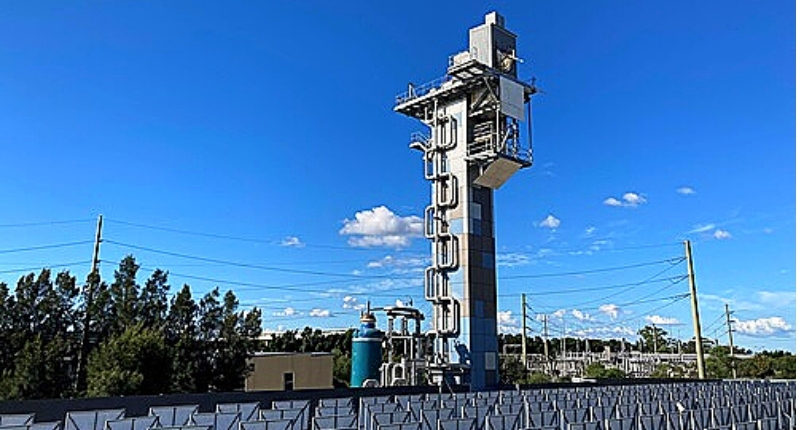- Research partnership between USA and Australia formed to create, test and model solar
- The technology is applicable for electricity and many other high temperature requirements
- Electricity could cost $78 per megawatt hour
A new solar technology is set to bring electricity bills down by some 80%, but it won’t look like what you’re used to.
It’s called falling particle CST, or concentrated solar thermal energy, a technology that is being developed by an international partnership between Sandia National Laboratories in the United States of America, ANU, CSIRO, and the University of Adelaide here at home.
How it works
CST does what it says on the tin: concentrates sunlight. Obviously, it’s not as simple as that, the concentrated sunlight heats what the researchers call a “curtain of falling low-cost particles to 700 degrees Celsius.”

The heat can then be used in various ways, including a number of industrial applications, the CSIRO said it could be applied in “mining, mineral processing, chemical processing, and other high temperature industrial processes.”

One of the other uses is electricity generation – and it can be used overnight too – meaning it has the potential to deal with the peaks and troughs in the grid.
Whilst it could be used to power our electric future that wasn’t always the case:
“Interestingly, the heat-storing ceramic particles in this system were originally developed for use in unconventional natural gas fracking – they are cheap and strong as well as stable enough to withstand many cycles of intense heating and cooling.”
Associate Professor John Pye, Australian National University
The falling particle CST technology is also capable of reaching in excess of 1,000 degrees celsius depending on conditions, and the CSIRO said a megawatt scale system is on the cards soon.
What could my electricity bill look like?
80% off. Simple. How?
“Our modelling shows a concentrated solar power system built around this falling particle curtain could generate a megawatt-hour of stored electricity for less than 60 US dollars,”
Associate Professor John Pye, Australian National University
The average house, according to various sources including industrial players like LG and research bodies like CSIRO, consumes approximately 7.3 megawatt hours a year or $2,500 per year. If electricity is generated at US $60 per megawatt or around AU $78 then it works out to about 80% less on your electricity bill.








